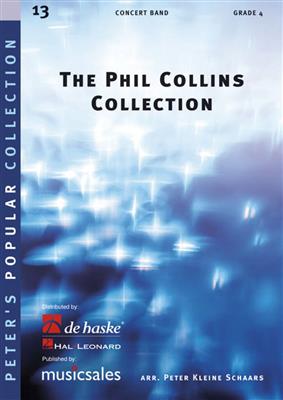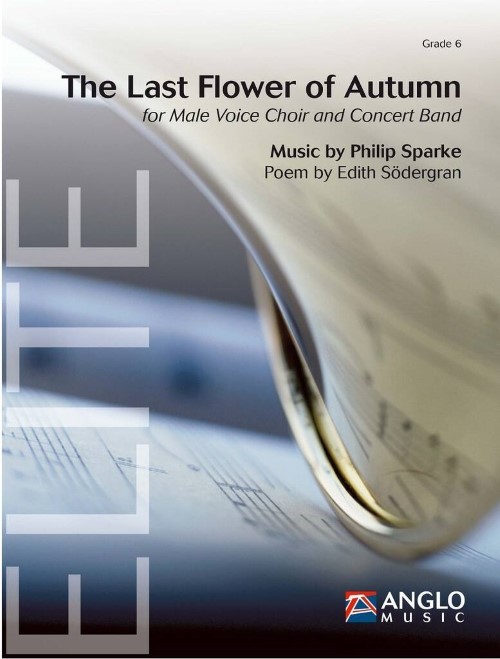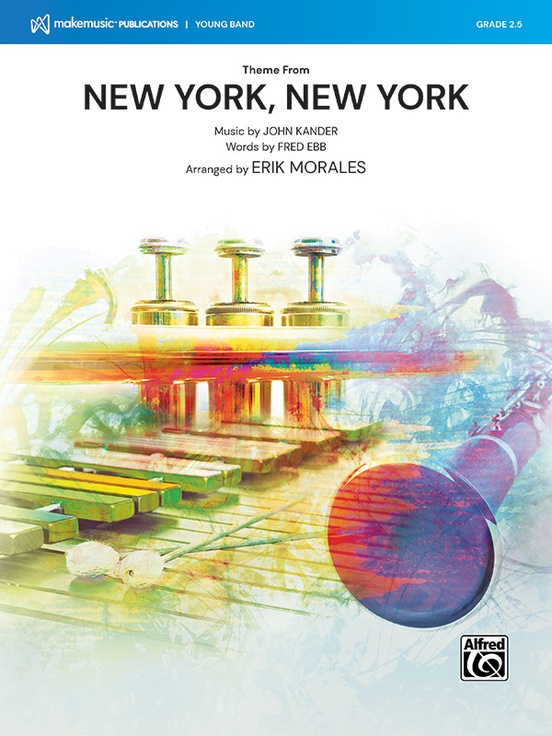Results
-
£184.99
Rubicon - Bert Appermont
The Rubicon is a river in Northern Italy which Julius Caesar crossed with his army in 49 BC in defiance of the leaders of Rome, who feared his power. A civil war against rival Pompey ensued, which culminated in Caesar seizing power as the absoluteruler of Rome. The phrase "crossing the Rubicon" therefore refers to any person committing himself irrevocably to a risky, decisive and irrevocable of course of action.The work consists of three parts that deal with this important moment in history.Part 1 (Meditation) symbolises Caesars request to the Gods to assist him in his difficult choice. In a slow introduction we hear the melancholy and beseeching sounds of the duduk (alternatively, this part can be played by a soprano saxophone)and of the soprano solo singer over the bourdon accompaniment. The soprano solo singer then sings "dona tibi pacem" (give him rest) in a melodious and probing theme.In Part 2 (Battle of Pharsalus) trumpets and trombones resound alternately ina stately Roman fanfare, producing a stereophonic effect. This develops into a martial theme in which Caesars impressive army goes to battle against the army of rival Pompey. While the theme of Caesars army fades away, Pompeys theme emerges as anaive dance in six-eight time. His army is definitely in the majority and it believes it can easily defeat the enemy. Suddenly trumpets and trombones clash on two sides of the orchestra: Caesars army advances and attacks. A fierce battle ensues inwhich the two themes are played alternately as well as simultaneously. Thanks to his shrewd battle tactics, Caesar manages to win this legendary battle after all: his theme resounds ever louder in trumpets and horns until everything dies out andchanges into a kind of reconciliation between the soldiers of the two armies. The melancholy "dona tibi pacem" from part 1 now serves as a reconciliation theme.Caesar is now the sole ruler of the New Roman Empire, which would be destined to leave itsmark on our Western civilisation to this day. The third part is a sparkling succession of dance music (Dance) with many Greek and Roman elements in which Caesars victory is praised and celebrated. It is common knowledge that the culture(arts, gods, etc.) of the Romans drew heavily on Greek culture. I have therefore used an authentic Greek theme (the Seikolos song) several times in this part (bar 17 in the euphonium, bar 60 in the base section, bar 68 in the sopranosaxophone) to suggest the music of that era and to evoke the right atmosphere. After a gradual increase in tempo in the entire orchestra, the opening melody gloriously resounds once more, surrounded by virtuoso dance music. The work ends withbombastic brass fanfares in which Caesars theme triumphs once more.NOTE FOR THE CONDUCTOR:The Armenian duduk and the monochord that are used in the introduction give a special tone to the music, but could be substituted (soprano saxophone instead ofthe duduk) or left out (monochord). The soprano solo is also doubled within the orchestra and could therefore also be left out if necessary, although it does provide the work with an extra dimension. The male voices in the introduction and the finalecould possibly be replaced with a synthesizer with choral setting.As a visual and acoustic element in part 2, the trumpets, the e-flat cornet, the small drum and trombones can be stood up and placed at two sides of the orchestra (bar 80).Seen fromthe point of view of the conductor, put the trumpets, the e-flat cornet and the small drum in the left section and the trombones in the right section of the orchestra. This also helps to create a visual contrast between the two themes of the secondpart. The players can be seated again at bar 97 or bar 121. The soprano soloist can be placed in or in front of the orchestra, depending on what gives the best result. For the conclusion of the work the soprano solo can be sung from afar (from thewings) to create additional atmosphere.This work was composed especially for the "St Joseph" brass band from Pey/Echt (Belgium) with conductor Mark Prils.
Estimated dispatch 7-14 working days
-
£109.99
Dublimania - Menno Bosgra
This new work is based on Irish folk music.In the first part, the main theme is presented as a ballad, starting with the piccolo (as replacement for the flute which is widely used in Ireland), moving on the wood section to end with the entire orchestra.It then changes to a kind of rock style theme: powerful, rhythmic accompaniment with effects in dampers, a pedal point and the use of the spoons which is typical of Irish music (Irish pub), high-range bongo drum (replacement for the Bodhran), etc.In this second part I introduced a second theme as a counterbalance, played by several groups, which has clearly a more legato character and therefore sounds more melodious.The climaxof the work starts in the low-range brass section with its marcato theme that is developed with a great deal of rhythmicity in the accompaniment, clusters, etc. into a percussion solo interspersed by the orchestra in five-eight time with frequent parallel movement in chords (folk music style).Towards the end, theme 2 recurs twice: first as heard earlier with an extra counter melody and accompaniment pattern, then in a canonical form, in which the theme is played by three groups. The conclusion is a repeat of the middle section in five-eight time.I have tried to use many of the colours of a wind orchestra by having the wood sections and brass section play alone and making extensive use of dampers. Percussion also has a prominent role throughout the work.
Estimated dispatch 7-14 working days
-
£54.99
The Centurions - James Curnow
The final bars of CENTURIONS take Grade 1 music to new heights of excitement! Artful composition for the first year band with limited ranges and rhythms makes this one you'll use again and again. Some easy use of 16th notes (for the Snare Drum only) helps to generate that extra bit of energy that lifts this one over the top while keeping the Percussion parts interesting for the players. Flute fingerings are kept easily manageable throughout and Brass ranges are carefully controlled.Appropriate for any program, CENTURIONS will inspire your young musicians to a bold and dramatic performance. Excellent for cross-curriculum teaching with history
Estimated dispatch 7-14 working days
-
 £84.99
£84.99Heart in Motion - Satoshi Yagisawa
Heart in Motion compares the development of an ensemble to a tree, which-with careful nurturing-grows branches, twigs, leaves and fruit. As a fertilizer, you need to add an extra helping of positive attitude, enthusiasm and passion to it.Inspired by these images and concepts, Satoshi Yagisawa has composed Heart in Motionwhich, with a magnificent fanfare followed by a warm-sounding chorale, certainly lives up to its name.
Estimated dispatch 7-14 working days
-
 £60.99
£60.99Song for Hope - Michael Sweeney
Written as a memorial for a middle school band student, this sensitive and moving work opens with a chorale played by off-stage brass. A flowing melody stated in the low register is then developed before leading to a brieffanfare-like affirmation. The Korean folk song You and I is briefly quoted before returning to the off-stage brass and calm closing passage. A beautifully scored lyric piece for band. (Extra players are not required for theoff-stage parts.) Dur: 4:30
Estimated dispatch 7-14 working days
-
 £122.50
£122.50The Phil Collins Collection
Phil Collins first burst onto the music scene in 1970 when he joined the rock band Genesis, not as their singer but as their drummer. In 1975 following the departure of singer Peter Gabriel, Phil Collins thought he would 'give it a go' at being the vocalist! Twenty years later everyone knows at least one of his hits. This highly entertaining medley features: 'Something Happened on the Way to Heaven', 'Saturday Night and Sunday Morning', 'A Groovy Kind of Love', 'Another Day in Paradise', 'Easy Lover', 'Against All Odds' and 'Sussudio'. Everyone will love playing this medley which covers many styles and emotions. Theoption to have the band make a vocal contribution can give an extra dimension during the performance.
Estimated dispatch 7-14 working days
-
 £104.99
£104.99Canterbury Chorale - Jan Van der Roost
This quiet piece with its broad tones was originally written for brass band on request of Robert Leveugle, chairman of the composers own band: Brass Band Midden Brabant (Belgium). The direct cause was a visit to the beautiful cathedral of theEnglish city Canterbury, in which so many fine compositions sounded throughout the centuries. Later on, Jan Van der Roost rescored this piece for symphonic wind band, exploring the full richness of colours of this formation. Besides solo phrases forseveral instruments, there are some massive tutti passages making the wind orchestra sound like a majestic organ. By the way: an "ad libitum" organ part adds an extra richness, colour and power to this piece, making it sound even more broad andgrand.
Estimated dispatch 7-14 working days
-
 £144.99
£144.99Serenata (Euphonium Solo with Concert Band - Score and Parts) - Van der Roost, Jan
While composing Serenata, Jan Van der Roost didn't focus too much on virtuosity, acrobatics or spectacle. Instead, he wanted to let the solo instrument shine as a melodic and expressive voice. And indeed: the warm sound of the euphonium touches the heart of the audience straight away in the first section with a melodious theme. Then follows a rigaudon, a noble and elegant dance from the Renaissance era. Despite the fact that some of the variations on the main theme require some technique and agility, the overall character mostly remains songful. The composition as a whole builds further on these two musical ingredients, but thanks to a clever alternation of melodic and technical passages, it offers a nice stylistic diversity to the listeners. The band is definitely not 'just accompanying' but fully participates and begins a dialogue with the soloist: both musical partners have their say. The end is more spectacular and sonorous, giving an extra boost of energy to the soloist as well as the band in a grand finale!Duration: 12.00
Estimated dispatch 7-14 working days
-
 £168.50
£168.50The Last Flower of Autumn (Male Voice Choir with Concert Band - Score and Parts) - Sparke, Philip
In this work for male voice choir and concert band, Philip Sparke aptly captures the mood of the poem The Last Flower of Autumn by Edith Sodergran (1892-1923), a Swedish-speaking Finnish poet. This solemn composition with extensive instrumentation echoes the idyllic, romantic mood of the poem, which can be understood as an allegory of human existence with all its hardships and life's inevitable difficulties.20 choral parts are included in the set, and extra Male Voice Choir parts can be ordered if needed.Duration: 10.15
Estimated dispatch 7-14 working days
-
 £75.00
£75.00New York, New York, Theme from (Concert Band - Score and Parts) - Ebb & Kander - Morales, Erik
Treat your audience to one of the most iconic songs of all time while introducing jazz and swing concepts at a very approachable level. Erik Morales has done a fantastic job with this arrangement of New York, New York, which requires no extra instrumentation to be as cool as the original. Perfect to showcase music from the Broadway show.Duration: 3.15
Estimated dispatch 7-14 working days
